A free template by Lucknowwebs.com for WYSIWYG WebBuilder 8
Powered by Sispro1-S
Nigel G Wilcox
Paragon Of Space Publication
© Copyright Reserved - United Kingdom
Ideal Screen Composition 1024 x 768
SITEMAP
SCIENCE RESEARCH
ABOUT
Desk
Supersonic
Stealth
MAIN INDEX
Sea-Air Planes
Beriev Be-12
The Beriev Be-12 Chayka is a Soviet turboprop-powered amphibious aircraft designed for anti-submarine and maritime patrol duties. The Beriev Be-12 was a successor to the Beriev Be-6 flying boat, whose primary roles were as an anti-submarine and maritime patrol bomber aircraft. Though tracing its origins to the Be-6, the Be-12 inherited little more than the gull wing and twin oval tailfin configuration of the older aircraft. The Be-12 had turboprop engines, which gave it an improved speed and range over the Be-6. The Be-12 also had retractable landing gear, which enabled it to land on normal land runways, as well as water.
Maximum speed: 530 km/h (329.33 mph) Maiden flight: Oct 1960 Length: 98.79 ft Wingspan: 97.90 ft Introduced: 1960 Manufacturer: Beriev
General characteristics
Crew: Four
Length: 30.11 m (98 ft 9 in)
Wingspan: 29.84 m (97 ft 11 in)
Height: 7.94 m (26 ft 1 in)
Wing area: 99.0 m² (1,065 ft²)
Empty weight: 24,000 kg (52,800 lb)
Loaded weight: 29,500 kg (64,900 lb)
Max. takeoff weight: 36,000 kg (79,200 lb)
Powerplant: 2 × Ivchenko Progress AI-20D turboprops, 3,864 kW (5,180 hp) each
Performance
Maximum speed: 530 km/h (290 kn, 330 mph)
Range: 3,300 km (1,800 nmi, 2,100 mi)
Service ceiling: 8,000 m (26,247 ft)
Wing loading: 298 kg/m² (61 lb/ft²)
Power/mass: 260 W/kg (0.16 hp/lb)
Armament
1,500 kg (3,300 lb) of external stores, including bombs, depth charges and torpedoes
Role: Maritime patrol aircraft
Manufacturer: Beriev OKB
First flight: October 1960
Introduction: 1960s
Status: Operational (in small numbers)
Primary user: Soviet Naval Aviation
Number built: 143
Developed from: Beriev Be-6
Two previously unknown types of large flying boat made their first appearance at the Soviet Aviation Day flypast of 1961. The swept wing, jet powered, Beriev Be-10 was one of the stars of the show; whilst another Beriev design, the turboprop engined Be-12 attracted little attention. Widely assumed to be a simple conversion of the 1949 vintage Be-6, the Be-12 was overlooked in many contemporary press reports. Not long after, however, the Soviet Naval Air Force chose the Be-12 to be the standard equipment of its coastal anti-submarine force, and the Be-10 was never to be seen in public again. Three decades on, the Be-12 was still in widespread service around Russia’s coasts, and had become renown for its versatility and robustness.
The Beriev Design Bureau, located at Taganrog near Rostov on the Azov Sea, has vast experience of designing ocean-going flying boats. Formed on August 6, 1934, with Georgii Mikhailovich Beriev as chief designer, it was responsible for the hugely successful MBR-2 short range reconnaissance flying boat of World War 2. This was followed in 1947 by the Be-6 (NATO code name ‘Madge’), a long range reconnaissance flying boat in a similar class to the Martin PBM Mariner, which featured a gull wing arrangement for mounting its two piston engines. Beriev’s next major design was the Be-10, a large twin-jet fast attack flying boat, with sharply swept wings and tail surfaces, powered by two Lyulka AL-7RV turbojets tucked under the wing roots.
In the late nineteen-fifties, the US Navy began development of the first Polaris nuclear missile submarines (the SSBN-608 USS George Washington class, first commissioned on December 30, 1959). Due to range and accuracy limitations, the Polaris A-1 missile needed to be launched from a position fairly close to the coast of the target country - especially one as large as the Soviet Union. Consequently, the AV-MF (Aviatsiya Voenno-Morskovo Flota - Soviet Naval Air Force) issued a requirement in 1956 for an aircraft capable of detecting and killing nuclear missile submarines in the coastal waters of the USSR.
It was anticipated that surface ships or shore based direction finding stations would indicate the approximate location of an enemy submarine. An ASW aircraft would then follow up with short range radar, MAD probe and sonobouys to locate and classify the target. An attack would then take place, usually in co-operation with surface ships. Although the Be-6 had been progressively updated, the AV-MF needed a larger aircraft capable of carrying all the necessary weapons and up-to-date sensor equipment.
Accordingly, while development of the Be-10 continued, Beriev began work on a completely new design for a slower more comprehensively equipped aircraft. In the late fifties, Beriev is thought to have flown an experimental Be-6 converted with turboprop engines. This probably led to consideration of a turboprop powered aircraft based on the Be-6 layout. In the event, the new design shared only the gull-wing layout and twin tail of the old Be-6. A design proposal was submitted to officials in November 1957 and soon accepted. The Be-12 was only slightly smaller than the Be-10, but much lighter, and with a similar hull shape.
Both the Be-10 and Be-12 were first revealed to the rest of the world at the Soviet Aviation Day Airshow at Tushino Airport, Moscow, on July 9, 1961. During the two hour flypast, a formation of four Be-10s was followed by a single example of the Be-12. Western observers were informed that the Be-10 had already entered AV-MF service, and assumed that the Be-12 was merely a one-off turboprop development of the ageing Be-6. The NATO reporting names ‘Mallow and ‘Mail’ were allocated to the Be-10 and Be-12 respectively. At this time, Western naval air forces were rapidly phasing out the use of maritime patrol flying boats, in favour of more efficient long-range landplane types such as the Lockheed P-3 Orion and Avro Shackleton, and it was widely expected that the Soviet Union would follow suit.
In the meantime, the AV-MF had discovered that the emphasis on performance had imposed serious limitations in the operational capability of the Be-10. Further development of the Be-10 was therefore cancelled in favour of using land-based Tupolev Tu-16 ‘Badger’ bombers adapted for the naval role. In contrast to the Be-10, the Be-12 prototypes were fitted with an extensive sensor fit, including a Magnetic Anomaly Detection probe, and a small internal weapons bay in the rear hull, as well as external wing pylons. The first prototype retained the retractable ‘dustbin’ search radar installation used on the Be-6, and made its first flight on 18 October 1960. Unfortunately it crashed on 24 November 1961 with the loss of 3 crew, after mishandling by the pilots. The second prototype feature a number of design changes, including relocation of the engines from below the wings to above the wings, and the addition of a prominent nose search radar in place of the ventral ‘dustbin’. It made its first flight in 1962 and immediately resumed service trials. With long endurance and the potential for taking over many of the Be-6s secondary roles as well, the Be-12 was approved for AV-MF service.
Series production started in 1963, at GAZ 86 at Taganrog. Production ceased in 1973 after a run of 143 aircraft (including prototypes). Production then switched to the Tupolev Tu-142 Bear-F. The Be-12 officially entered service with the AV-MF in Spring 1964. The semi-official nickname of ‘Tchaika'(Seagull) was quickly given because of its wing form. Its main role was ASW patrol, operating out to 345 nm (500 km, 310 miles) from shore. By 1967 the Be-12 had replaced the Be-6 in front-line duties and began to take on second line roles. These eventually included coastal surveillance, multi-sensor reconnaissance, anti-shipping patrol, photographic survey, naval co-operation, transport, and Search and Rescue.
The Be-12 made another airshow appearance on July 9, 1967. Three aircraft taxied out and took-off at the start of the military portion of the Soviet Aviation Day display at Domodedevo Airport. This time there was no mistaking their operational status.
Over the years, the Beriev Be-12 has gained a total of 44 FAI recognized world records for aircraft in its class - all the records possible! During the period October 23-27, 1964, a stripped down aircraft designated M-12 set six new climb to height records for Class C.3 Group II turboprop amphibians, including an altitude of 12,185 m (39,977 ft) without payload, and an altitude of 9,352 m (30,682 ft) with 10,000 kg (22,046 lb) payload. These were followed by various speed and payload records. A pure flying boat version, with landing gear deleted, has also established a number of records in Class C.2 Group II for turboprop flying boats, using the same M-12 designation.
A number of equipment improvements were made during and after the production run of the Be-12. The initial ASW avionics suite was progressively upgraded. The original drum-shaped nose radome was replaced from about 1970 by a new radome which was flattened top and bottom to an oval shape. This was noticeable because the original radome had been plain grey in colour, while the new shape was coloured white over it’s lower three-quarters. ESM receivers and a tail warning system were also added and the engines were upgraded from the AI-20D series 3 to the series 4 standard.
From the mid 1960s, US Navy SSBN submarines were progressively equipped to carry the improved Polaris A-3 missile, which featured a much longer range and enhanced accuracy. This allowed effective submarine operations to take place much further away from the Soviet coast. Thus the coastal ASW patrol role of the Be-12 declined in importance from 1970 onwards, in favour of more secondary roles. At the same time, anti-submarine operations were increasingly taken over by specialised shipboard ASW helicopters and more sophisticated Il-38 ‘May’ landplanes.
As a result, from 1972 onwards four surplus aircraft were converted to the high speed Search and Rescue role and designated Be-12PS (Poiskovo-Spasatelynyi - Search Rescue). Equipment changes included the removal of ASW equipment and the addition of a big fuselage door under the starboard wing trailing edge. Ten new-build aircraft were also produced to this standard. An earlier attempt at producing a dedicated SAR variant, the Be-14, had been abandoned as the extensive changes specified - including removal of the main weapons bay, installation of a floor inside the fuselage and removal of the MAD detector boom - proved too costly.
Like the Be-6 before it, the Be-12 took on many non-military tasks for the Soviet/Russian government, such as fishery protection, whaling patrol, Arctic base supply transport, mapping, geophysical survey, utility transport etc…these missions were flown by standard AV-MF aircraft. The aircraft is highly regarded by crews, being highly reliable and very manoeuvrable, with powerful responsive engines. However, flying in it is a test of endurance, since the noise and vibration from the engines is particularly penetrating.
Following the break-up of the Soviet Union, the Beriev factory attempted to gain commercial sales from various versions of the Be-12. Seven redundant ASW examples were acquired from the AV-MF in 1991 for refurbishment and conversion.
Two aircraft were converted to the fire-bomber role, designated Be-12P (Protivopozarnyi - Fire protection). The modifications included the addition of twin water scoops mounted behind the hull step, and the installation of a metal 4.5 tonne capacity water tank in the rear weapons bay. Two further 0.75 tonne capacity water tanks were fitted in the forward stores position behind the cockpit, with extra drop doors in the hull below. Small overflow portholes were also fitted in the upper fuselage over the water tanks. Conversion work took place at the Irkutsk factory in Northern Siberia near Lake Baikal, with thorough drop testing trials at Taganrog during 1992. The first prototype Be-12P was a refurbished ASW machine coded yellow 40. This machine flew in standard AV-MF colours. A second prototype, registered RA-00073, flew in demonstrator colours and has appeared at the MAKS Moscow air show. Beriev eventually abandoned certification plans in favour of the more capable Be-200 jet amphibian.
Three other ex-military aircraft were converted during 1992-93 to Be-12NKh cargo transport aircraft, with an enlarged cargo hatch in the fuselage and the removal of all ASW equipment. Unfortunately, two of the aircraft suffered accidents and this project was abandoned.
The aircraft was obviously extremely well built, since aircraft returned to Taganrog for conversion showed virtually no signs of corrosion after years of service.
The Be-12 has served with all four of the Soviet Fleet’s Naval Aviation forces during its career: Black Sea, Northern, Baltic and Pacific. Peak strength in the mid 1970s comprised four full aviation regiments (some twelve squadrons of eight aircraft each), together with a number of independent squadrons. During the 1970s some of these regiments partially re-equipped with the Ilyushin Il-38 ‘May’, but in 1990 the Be-12 still outnumbered the newcomer by 1.5:1. Very low attrition has kept the number in service at a steady 75-90 aircraft since the early 1980s.
In an attempt to improve the surveillance of the US 6th Fleet in the Mediterranean, three Be-12s of the Black Sea Fleet deployed to Cairo West (and later to Mersa Matruh), Egypt, from 1968. The aircraft appeared in full Egyptian air force markings, including aircraft serial number 4385, but were AV-MF crewed and operated. These aircraft operated alongside AV-MF Tu-16s initially, and later with Il-38s, both types in Egyptian markings. The aircraft departed in July 1972 when President Sadat severed ties with the USSR.
Four aircraft were exported to Vietnam in 1981. Specially adapted to tropical operations these aircraft operated from Cam Ranh Bay, to watch over the US 7th Fleet. Reports of the Be-12 operating from Syria have not been substantiated. Despite some reports, the type was not supplied to China.
At midnight on December 31, 1991, the Soviet Union was officially dissolved and most its constituent states recombined as the CIS (Commonwealth of Independent States). The Russian Federation Navy took over operations of most former Soviet naval air force aircraft. Ukraine declined to join the CIS, and Russia was faced with ceding control of any Black Sea fleet aircraft and bases on Ukraine territory to the Ukrainian Navy. Fortunately, a deal was negotiated to divide the assets between the two countries.
According to official figures released in 1993, the Russian Navy had some 55 operational Be-12s in service (plus 22 in reserve storage), compared to only 36 Ilyushin Il-38s. By 2005 this number had dwindled to only twelve.
Whether hunting submarines, flying rescue missions or supplying Arctic bases, the versatile Be-12 amphibian has been faithfully serving the CIS and USSR for over forty years. With no direct replacement in sight, the Be-12 looks set to soldier on well into the 21st century. A remarkable record for an aircraft configuration regarded in the West as obsolete in 1960, four years before it even entered service.
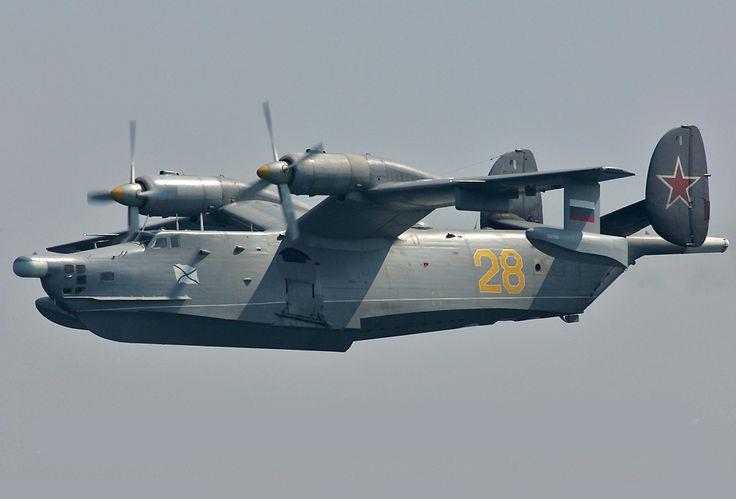
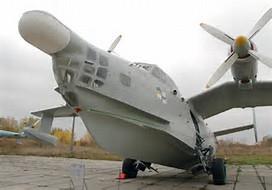
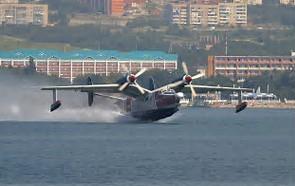
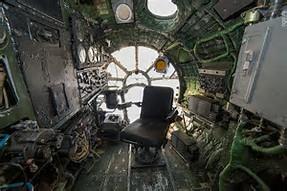
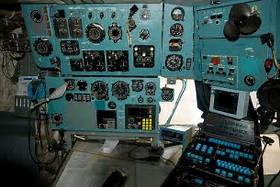
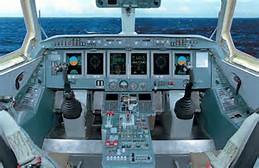
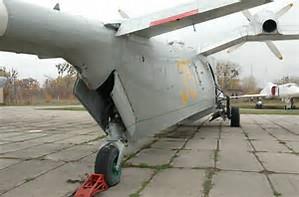

S'sonic
Stealth
Menu
Space
Transport
Menu
Topic
Menu
Study
Menu










